- Manipulation filters
 Points only:
allows you to select control points selecting points only.
Points only:
allows you to select control points selecting points only. Mesh only:
allows you to select control points selecting their mesh lines only.
Mesh only:
allows you to select control points selecting their mesh lines only. Points and
mesh: allows you to select control points either selecting points
or their mesh lines.
Points and
mesh: allows you to select control points either selecting points
or their mesh lines.
-
 Select all points: selects all the points of the
control points mesh. This command is also available from the mesh lines
and control points contextual menu.
Select all points: selects all the points of the
control points mesh. This command is also available from the mesh lines
and control points contextual menu. -
 Deselect all points: unselects all the
points of the control points mesh.
Deselect all points: unselects all the
points of the control points mesh.  Display Inflections: displays arrows at the
control points representing their normal vectors and deduces the
inflection at the control point locations. These arrows are displayed
when the surface is not locally planar at the considered control points
and when the control points are connected to three mesh lines at least.
Display Inflections: displays arrows at the
control points representing their normal vectors and deduces the
inflection at the control point locations. These arrows are displayed
when the surface is not locally planar at the considered control points
and when the control points are connected to three mesh lines at least.
This option is P2-only.-
 Display deviation: displays the maximal deviation
location and value in 3D, the deviation value is also displayed at the
bottom of the dialog box.
Display deviation: displays the maximal deviation
location and value in 3D, the deviation value is also displayed at the
bottom of the dialog box.
When approaching the control points mesh, the cursor changes from the arrow representation to a cross representation and the nearest mesh line or control point is automatically pre-selected. The cursor representation can be customized from the Tools Options settings.
Shift and Ctrl keys allow you to add mesh lines or control points to the selection.
-
Click the Control Points icon:

The Control Points dialog box appears. 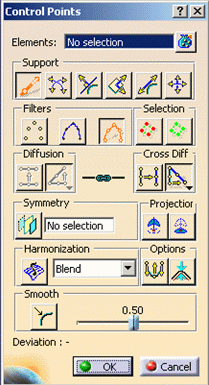
-
Select Surface.1
Control points and the mesh are displayed on the surface. -
Click the Elements List icon:

The Elements dialog box appears and displays the list of selected elements. 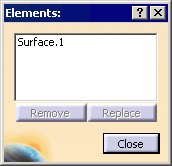
-
Click Close in the Elements dialog box.
-
Click the Normal to compass icon if not already selected:

-
Click the Points only icon if not already selected:

Approaching the cursor close to the mesh allows you to select control points only. 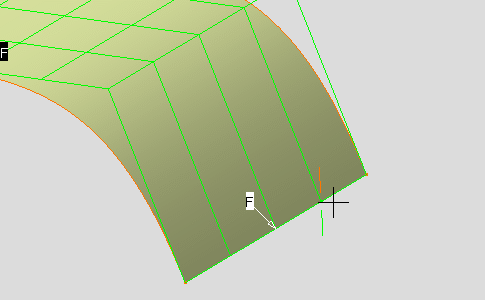
-
Click the point or click close to it to select it.

-
Click the Mesh only icon from the Options frame:

Approaching the cursor close to the mesh allows you to select mesh lines only. 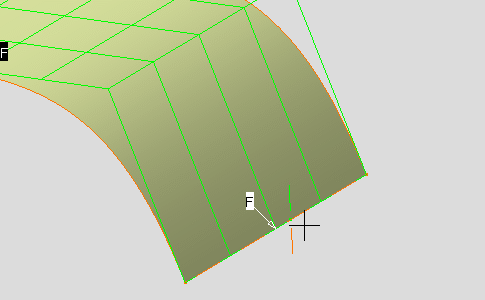
-
Click the mesh line or click close to it to select itself and its control points.

-
Click the Points and mesh icon from the Options frame:

-
Select both Surface.1 and Surface.2.
Control points and the mesh are displayed on both surfaces. 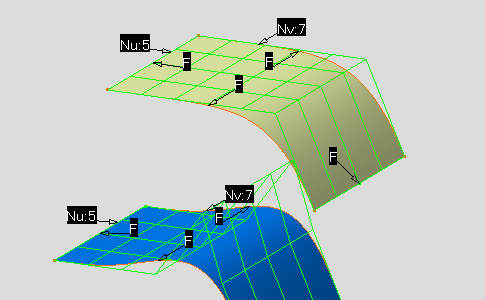
-
Click the Manipulators Snap icon from the Dashboard toolbar:

-
Select the first control point.
Note that mesh representations have been simplified. 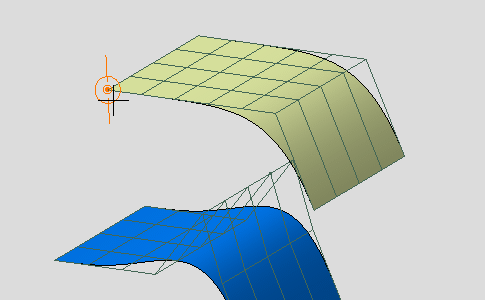
-
Select the second control point.
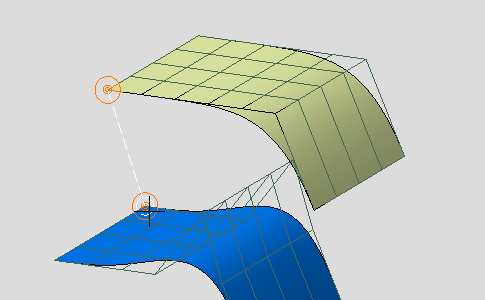
The first control point has been snapped onto the second control point. 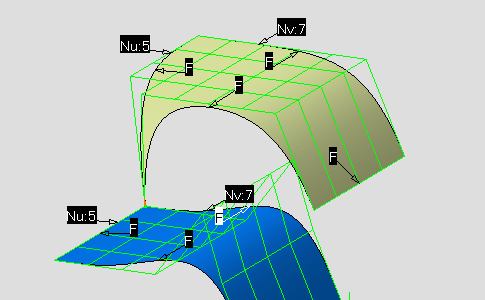
-
Click OK to validate modifications and close the dialog box.